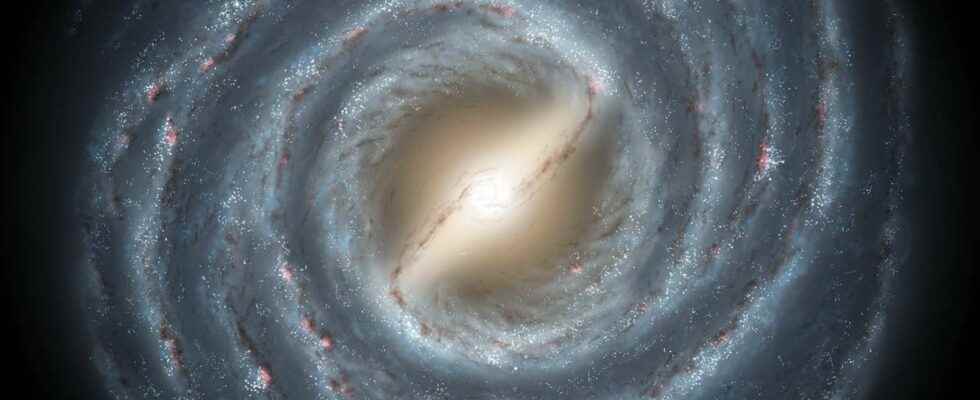The outlines of the galaxy seem to vary as you go deeper into it: researchers have created an animation to model the dust that inhabits the Milky Way. Their results are the subject of a study published in the journal Astronomy & Astrophysics. On the video, we venture from Earth up to 13,000 light years away, towards the galactic center. In total, this represents only slightly more than 10% of the distance to be traveled to leave the galaxy. To achieve this technical feat, the researchers combined photometric data from the new Gaia mission data catalog and those of the 2MASS statement. Thanks to project Explore which develops algorithms for machine learning to exploit gigantic datasets, they have thus produced the largest 3D cartography ever made of the Milky Way.
If we often associate what lies between the stars as being empty, it is not so! Or almost: the space between the stars is filled with dust and gas, as in the animation created by the researchers, called interstellar medium (ISM). Detect these dust and these gases can be made by studying the light coming from the stars under different wavelengths. For each, the light is slightly scattered, making the star less luminous than if there were no ISM. And the shorter the wavelength (towards the blue), the stronger the light is scattered. By looking at the light coming from a star in this way, researchers can deduce the quantity of gas between them (the observer) and him (the light source). Then, to reconstruct this dust in 3D, the astronomers combine this data for different lines of sight.
Dust is the precursor to stars
If no phenomenon is really discovered in this study, it remains nonetheless useful for the future. Because these are in clouds of dust called nebulae that the stars are forming. Thus, the comparison of the stellar distribution and the cartography of the dusts would make it possible to “understand what internal mergers or disturbances shaped the Galaxy in the first three kiloparsecs (about 10 light years)”explains the study.
“Dust clouds are linked to the formation and death of stars, so their distribution tells how structures formed in the galaxy and how the galaxy evolves”said Nick Cox, co-author of the study and coordinator of the Explore project. “Maps are also important for cosmologists by revealing regions where there is no dust and we can have a clear, unobstructed view of the Milky Way to study theUniverse beyond, as in making deep-field observations with Hubble or James-Webb. »
This video takes you through the Milky Way in 3D, thanks to the latest data from Gaia. © ESA/Gaia/DPAC
Interested in what you just read?
